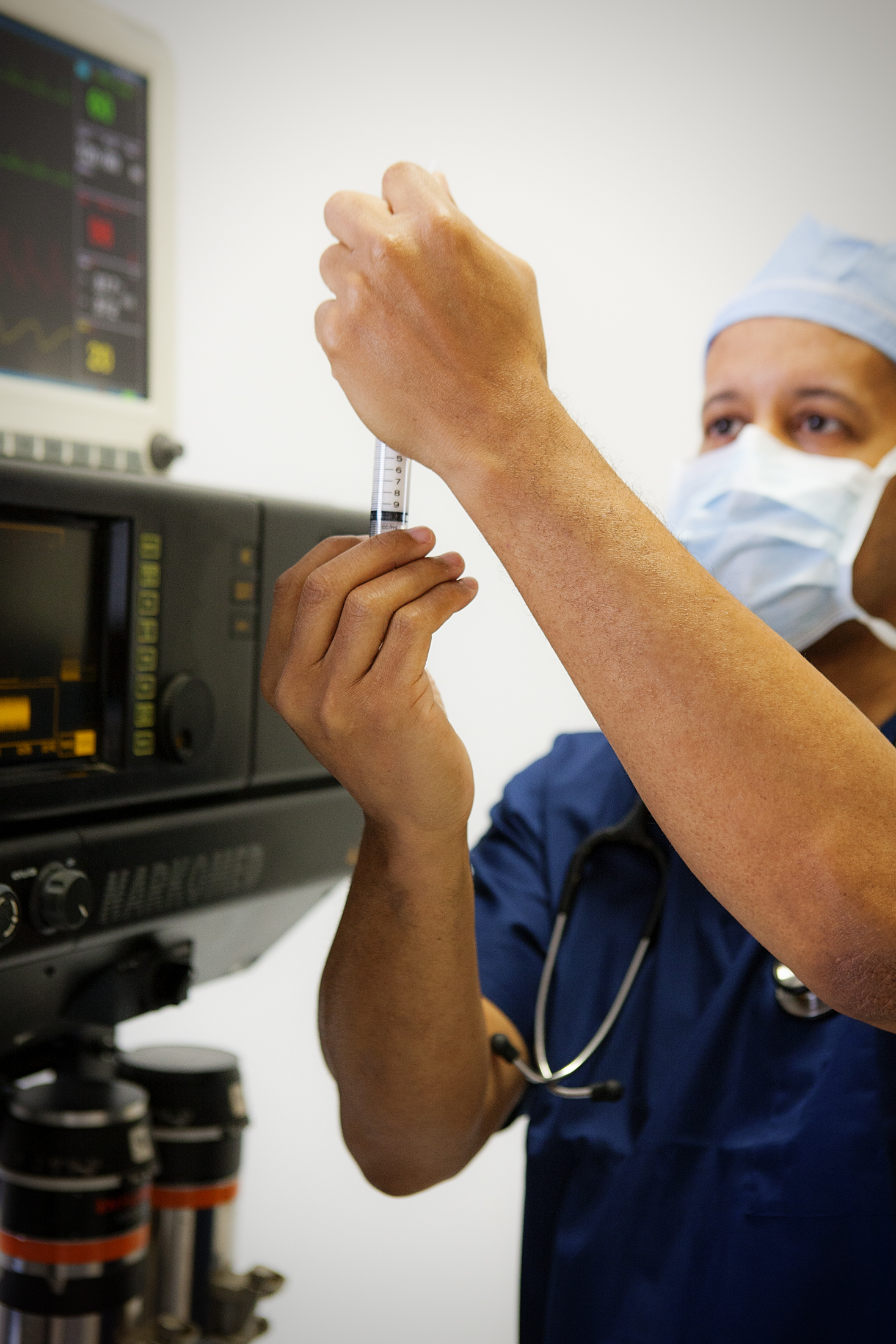
The discovery and development of pain management has allowed for safer, longer, more invasive surgeries and has dramatically reduced the pain associated with such procedures (1). Interventional pain management is a specialty of pain management that uses techniques and procedures such as implantable drug delivery systems, neurolytic blocks, and epidural infusions to alleviate pain.
Early developments in interventional pain management date back to physicians studying regional anesthesiology and nerve blockage in the late 1800s (2). Regional anesthesia and nerve blocks target specific organs or body regions and can numb pain to the targeted region (3). In 1884, Dr. Carl Koller reported that cocaine had a numbing effect on the tongue (2). Physicians then began to use cocaine to numb regions of the body during ophthalmology, urology, and general surgery. In 1899, Tuffer described the first nerve block, spinal cocaine, for pain management, and in 1901, Dr. Harvey Cushing discovered the use of caudal epidural injections for regional pain relief. Many other physicians, such as Dr. Schloesser with trigeminal alcohol blockage, continued to pioneer the field of interventional pain management and develop new advancements (4).
Dr. Von Gaza pioneered diagnostic blockage in pain management with the use of procaine for determining whether pathways of pain were sensory or sympathetic (2). This led many physicians to study interventional pain management and focus their efforts on diagnostic techniques. Dr. White in 1930, and Dr. Steindler and Dr. Luck in 1938 all developed novel applications for diagnostic interventional techniques. Dr. Steindler and Dr. Luck used procaine hydrochloride injections to identify sources of pain in lower back disorders. These advancements furthered the subspecialty of interventional pain management to include diagnostic techniques.
Many important advancements in interventional pain management were developed since the start of interventional pain management, and the publication of pain management textbooks were critical to the spread and recognition of interventional pain management as a subspecialty. In 1953, Dr. John Bonica wrote a groundbreaking textbook, The Management of Pain, which outlined many key developments in pain medicine. Bonica also later opened the first multidisciplinary pain center (4). In 1954, Dr. Vandam and Dr. Eckenhoff published an article, which offered a different perspective from Bonica’s textbook (6). Vandam and Eckenhoff’s chose to focus not only on pain relief from nerve blocks but also on the nature of pain. Dr. Privthi Raj published the Practical Management of Pain in 1986, which was considered to have “launch[ed] the era of interventional pain management” (2). These physicians and authors are considered to be some of the most important modern contributors of interventional pain management.
The term “interventional pain management” was not coined until 1996 when Dr. Steven Waldman used the term in the publication of the Atlas of Interventional Pain Management (5). Now, this subspecialty has received recognition by the United States National Uniform Billing Committee to bill under programs such as Medicare and Medicaid (1). There are currently several interventional pain management organizations for physicians practicing this subspecialty such as the Society For Pain Practice Management and American Society of Interventional Pain Physicians.
Interventional pain management has evolved to become a subspecialty in medicine and now includes many techniques (2). As seen throughout history, failures in delivery can be extremely dangerous, and proper specialization and continuous research are vital for patient safety. Current work done by physicians and researchers will no doubt continue to revolutionize medicine and offer patients more options for pain management.
Resources:
1. http://nucc.org
2. http://www.ncbi.nlm.nih.gov/pubmed/16871301
3. http://www.webmd.com/pain-management/guide/nerve-blocks
4. http://painmanagementohio.com
5. Atlas of Interventional Pain Management 3rd ed. S.D. Waldman (ed) Elsevier Philadelphia 2010
6. http://www.ncbi.nlm.nih.gov/pubmed/13124799




